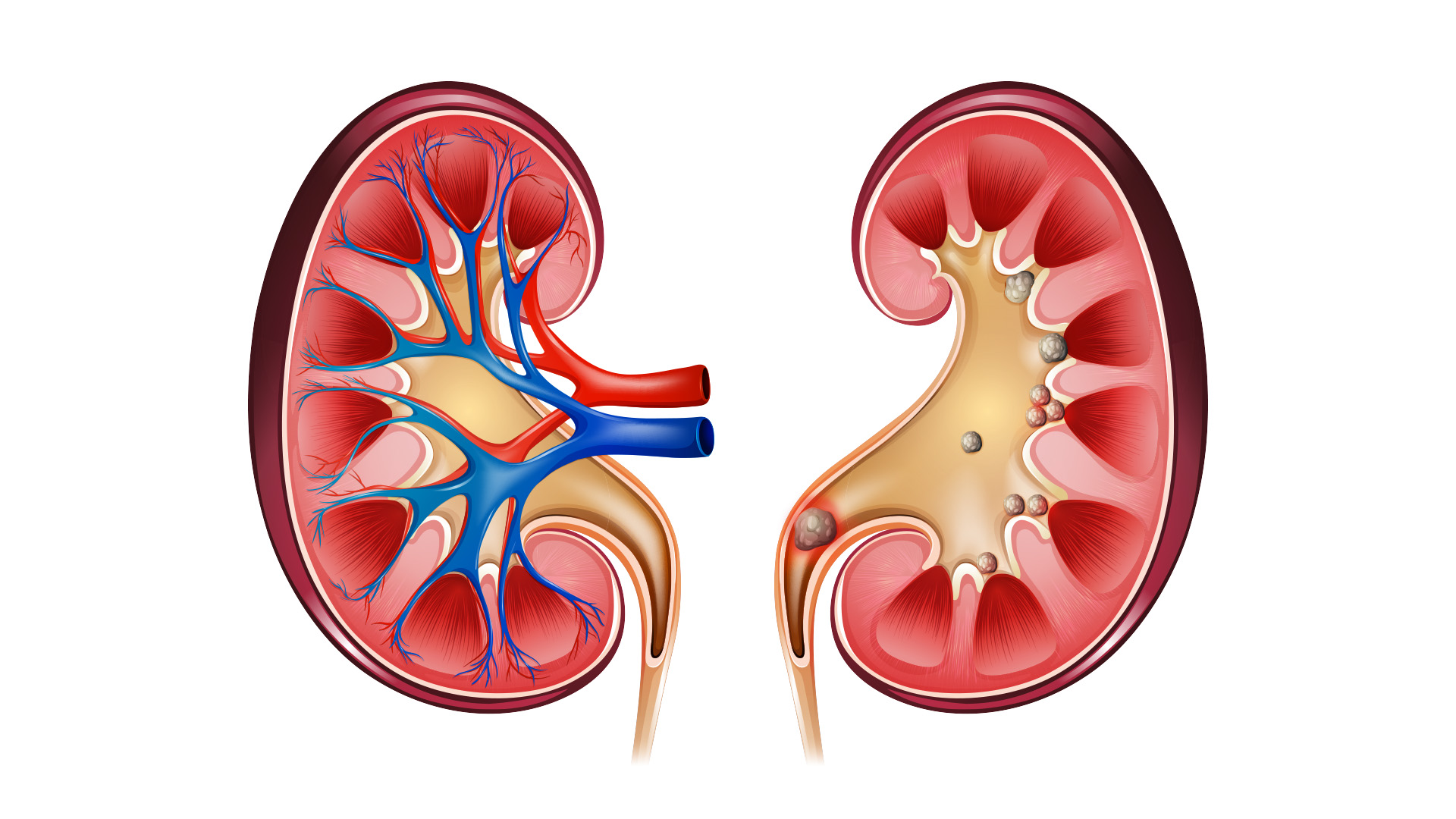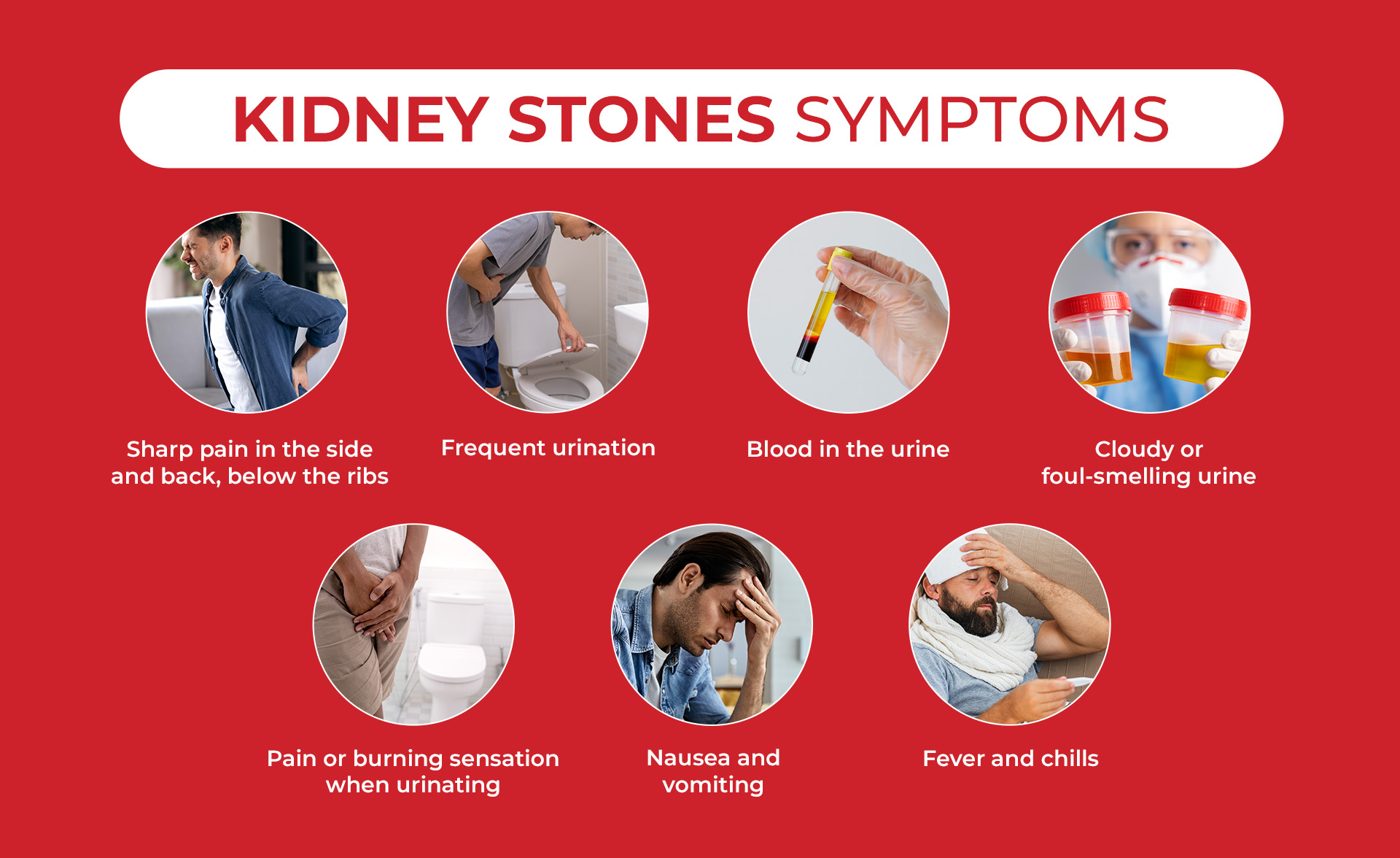Published: January 14, 2024 | 5 mins read
The 7 Kidney Stone Symptoms You Must Know
Kidney stones are one of the most painful conditions that a person can experience.
However, when a kidney stone is just beginning to form in your kidney, there usually isn’t any sign. Some people experience a dull ache in their mid to lower back. But, this isn’t consistent. The pain really only kicks off when it detaches from your kidneys and tries to enter your urinary tract.
But aside from the pain, there are other signs to watch out for.
In this article, we will discuss the seven common kidney stone symptoms.

EARLY SYMPTOMS
For some of us, the first signal that there may be a stone forming is a dull ache in our mid to lower back around where the kidneys are. These dull aches are usually felt 1-2 months before a stone fully detaches and is very mild. So mild that it may even go unnoticed by most.
Depending on the type of stone that you form, these dull aches can be from the stone tugging at the interior wall of the kidney either from growth or as it tries to detach. Or, for stones that form in suspension in the urine, it can be the stone entering the opening of the urinary tract (renal pelvis) , getting stuck, and causing a minor back-up of urine into the kidney.
More severe back-ups of urine are where the real explosive pain starts, which we will discuss next.
1. SHARP PAIN IN THE SIDE AND BACK, BELOW THE RIBS
The most common symptom of kidney stones is a sharp pain in the side and back, below the ribs. In medical terms, this pain is called renal colic. The pain can be so severe that moving can be difficult.
This pain is usually brought about by hydronephrosis. Hydronephrosis is when urine gets stuck in the kidney due to obstruction from a stone. If you want to know more about this condition, read our blog on hydronephrosis.
Often, the pain can radiate to the groin. And this is due to the stone’s movement through the urinary tract. Kidney stones can range in size from a grain of sand to a golf ball. So, the stones moving through the urinary tract can cause pain.
2. PAIN OR BURNING SENSATION WHILE URINATING
When you have kidney stones, you might also feel a burning sensation while urinating. That’s because the stone tears the soft flesh of your urinary tract as it moves. As a result, it can cause inflammation and irritation, which can make it painful to urinate.
3. FREQUENT URINATION
In addition to the pain, some people may also experience a frequent urge to urinate. And this makes sense because the bladder feels that there’s a foreign object inside. It causes irritation, so the bladder contracts more frequently.
4. BLOOD IN URINE
Again, kidney stones are scraping and tearing the lining of the urinary tract. So it is possible to experience hematuria (blood in the urine). The blood may appear red or pink and be visible to the naked eye.
But please note that hematuria can also signify other conditions, such as a urinary tract infection or bladder cancer. If you notice blood in your urine, seeing a doctor as soon as possible is essential.
It is also very common to experience Coca-Cola colored (very dark) urine shortly after your stone releases from your kidney. This can be quite frightening for first time stone formers. But, typically resolves itself after a few urinations. If you see bright red blood in large quantities, this is a much larger concern and you should seek immediate medical attention.
5. CLOUDY OR FOUL-SMELLING URINE
When a kidney stone is present, it can create a breeding ground for bacteria. This can cause the urine to become cloudy and foul-smelling.
If your urine is cloudy or has a strong odor, it is important to see a doctor. This could be a sign of a urinary tract infection, which can be treated with antibiotics.
6. NAUSEA AND VOMITING
Nausea and vomiting can accompany other symptoms of kidney stones. This is caused by the body’s natural response to pain and inflammation. When the body detects pain or inflammation, it can trigger the release of certain hormones, such as adrenaline and cortisol. These hormones can cause nausea and vomiting.
7. FEVER AND CHILLS
In addition to nausea and vomiting, some people may experience fever and chills. This is a sign that the body is fighting an infection, which can be caused by the presence of a kidney stone.
When there’s an infection, the body’s immune system responds by increasing its temperature, which can cause fever and chills. Severe infection can be life-threatening, so please see a doctor immediately.

If you experience any of the symptoms listed in this article, we suggest having a diagnosis. In that way, we can better troubleshoot the root cause of the problem, which is potentially a kidney stone.
You can read about the different diagnostic imaging available on our Imaging Techniques blog.
Suppose you confirmed that it really is a kidney stone. Our Coaching Program can give you real-time expert advice to help you manage your symptoms effectively and guide you through the process, from diagnosis to treatment and eventually towards kidney stone prevention.

Comments or questions?
Responses
WHAT TO READ NEXT
Publish Date: June 30, 2024
The Hidden Dangers Of Manufactured Citric Acid
Publish Date: March 10, 2024
Is Marijuana Use Linked to Kidney Stone Risk?
Publish Date: January 21, 2024
Stone Still In the Kidney? Here’s What To Do Next